ISO Services
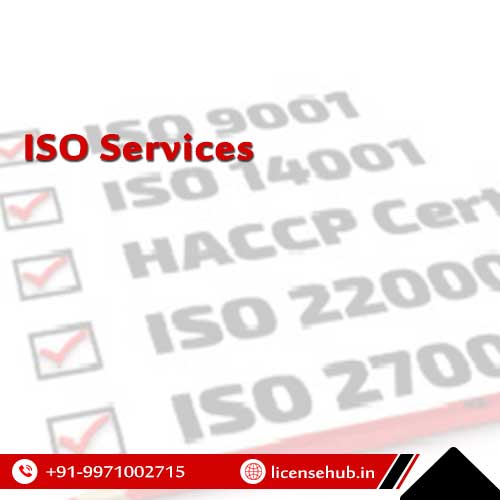
ISO Services
ISO 14001:2015 Certification standard for EMS (environmental management system) worldwide. Your ISO 14001 certificate ensure your customers, stakeholders & environmental authorities that you have assessed impact of your activities over your surroundings & have taken proper measure to eliminate or minimize negative impact. ISO 14001 certification provides you a tool to control all your processes with environmental viewpoint.
OHSAS 18001 Certification
OHSAS 18001:2007 is the Occupational Health and Safety Management Systems Guidelines for the implementation of OHSAS 18001. The standard is applicable to any organisation that wishes to eliminate or minimize risk to employees and other stakeholders who may be exposed to OH&S risks associated with its activities.ISO 27001:2013 Certification
ISO/IEC 27001 :2013 is the Information Security Management system system - an overall management and control framework - for managing an organization's information security risks. It is a set of 'best practices' controls for Information Security.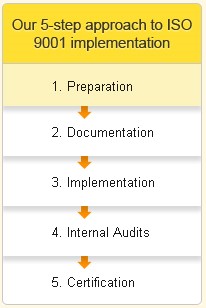
ISO 9001: Certification
The ISO 9001 certification is an international standard that defines good management practices. The certification aims at providing a global standard that spells out quality and trust. To meet the requirements for the ISO 9001 certification, an organization should demonstrate its ability to consistently provide products that meet applicable regulatory requirements and continue to meet changing expectations of customers.Step 1 (Preparation)
The first step addresses how to properly prepare the implementation of ISO 9001 at your small or midsize company. It's not a difficult step but it's important and should not be missed.Step 2 (Standardation)
Writing the ISO 9001 quality manual, the quality policy and the various quality procedures is usually the most difficult step when implementing ISO 9001. This is because these standards have to meet all of the many rather hard-to-understand requirements of the ISO 9001:2008 standard; in addition, writing these standards without help at the beginning of the ISO 9001 implementation is a big initial hurdle.Step 3 (Implementation)
Now it's time to implement your ISO 9001 quality management system throughout your company. During this phase you will introduce any new requirements that you included in your customized quality and procedures manual to affected company employees, and you will help them adjust their way of working accordingly. To make this step a success, it is most important that your employees understand the benefits of the new ISO 9001 requirements. Since you will be using our business-friendly and non-bureaucratic ISO 9001 quality manual and quality procedures, your employees will easily recognize the benefits and, thus, readily adopt the new requirements.Step 4 (Internal Audits)
Internal ISO 9001 audits are inspections in which your company evaluates itself to see if all ISO 9001 requirements are being followed. These internal audits are not only conducted when implementing ISO 9001 but also periodically after achieving ISO 9001 certification. All internal audits are performed by an employee of your company who has been trained in ISO 9001 audits; alternatively, you could use a subcontractor.Step 5 (Certification)
In order to achieve ISO 9001 certification, it will be necessary to have an independent ISO 9001 auditor visit your company and perform the certification audit. The ISO 9001 certification audit can be performed soon after you have completed your internal audit.ISO 22000:2018
Food safety management systems — Requirements for any organization in the food chain
This standard specifies requirements for a food safety management system (FSMS) to enable an organization that is directly or indirectly involved in the food chain:- To plan, implement, operate, maintain and update a FSMS providing products and services that aresafe, in accordance with their intended use;
- To demonstrate compliance with applicable statutory and regulatory food safety requirements;
- To evaluate and assess mutually agreed customer food safety requirements and to demonstrate conformity with them;
- To effectively communicate food safety issues to interested parties within the food chain;
- To ensure that the organization conforms to its stated food safety policy;
- To demonstrate conformity to relevant interested parties;
- To seek certification or registration of its FSMS by an external organization, or make a self-assessment or self-declaration of conformity to this standard.
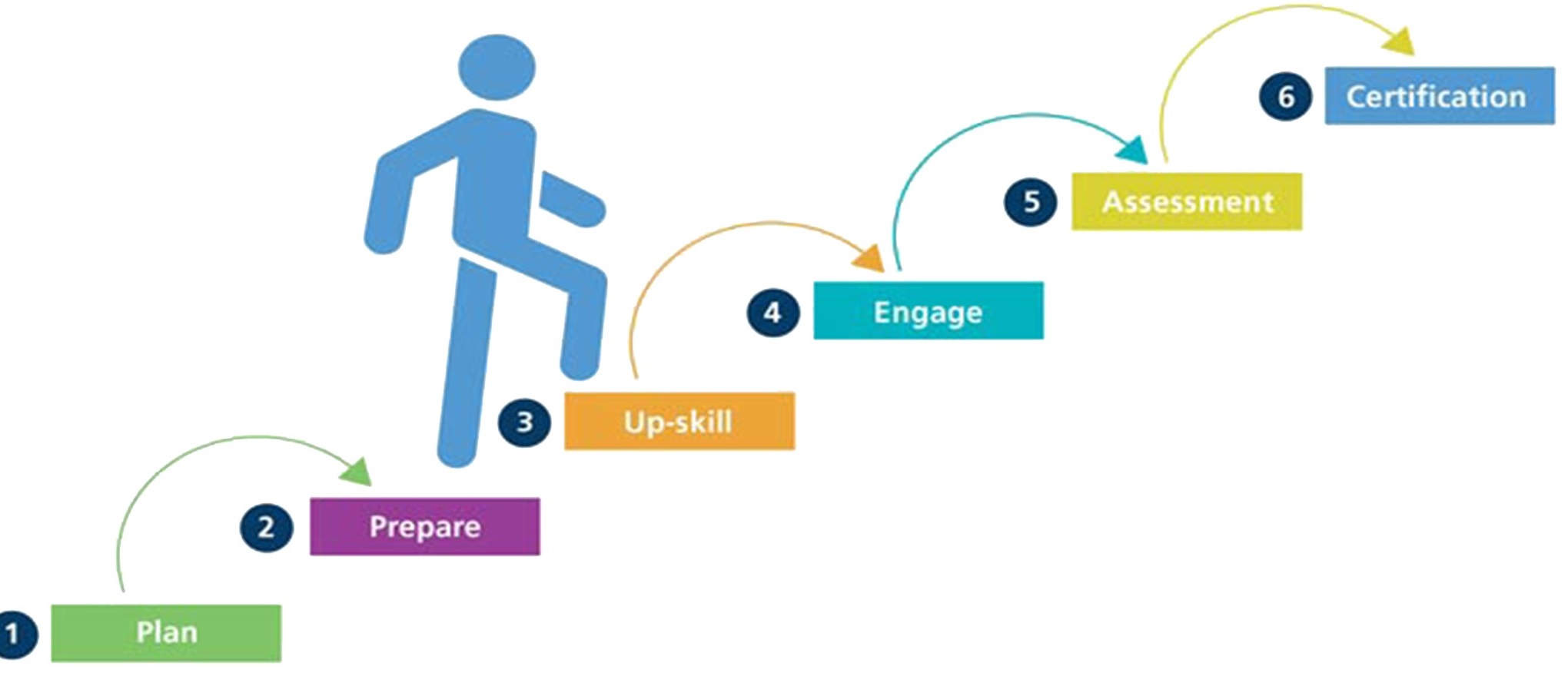
ISO 10002:2018
Quality management —Customer satisfaction —Guidelines for complaints handling in organizations
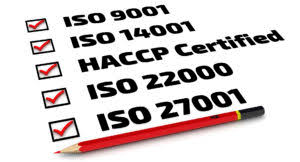 This standard gives guideline for the process of complaints handling related to products and services within an organization, including planning, design, development, operation, maintenance and improvement. The complaints-handling process described is suitable for use as one of the processes of an overall quality management system.
NOTE Throughout this standard, the terms "product" and "service" refer to the outputs of an organization that are intended for, or required by, a customer.
This standard is intended for use by any organization regardless of its type or size, or the products and services it provides. It is also intended for use by organizations in all sectors. Annex B provides guidance specifically for small businesses.
This standard addresses the following aspects of complaints handling:
This standard gives guideline for the process of complaints handling related to products and services within an organization, including planning, design, development, operation, maintenance and improvement. The complaints-handling process described is suitable for use as one of the processes of an overall quality management system.
NOTE Throughout this standard, the terms "product" and "service" refer to the outputs of an organization that are intended for, or required by, a customer.
This standard is intended for use by any organization regardless of its type or size, or the products and services it provides. It is also intended for use by organizations in all sectors. Annex B provides guidance specifically for small businesses.
This standard addresses the following aspects of complaints handling:
- Enhancing customer satisfaction by creating a customer-focused environment that is open to feedback(including complaints), resolving any complaints received, and enhancing the organization's ability to improve its products and services, including customer service;
- Top management involvement and commitment through adequate acquisition and deployment of resources, including personnel training;
- Recognizing and addressing the needs and expectations of complainants;
- Providing complainants with an open, effective and easy-to-use complaints process;
- Analyzing and evaluating complaints in order to improve the quality of products and services, including customer service;
- Auditing of the complaints-handling process;
- Reviewing the effectiveness and efficiency of the complaints-handling process.
ISO 4217:2015
Codes for the representation of currencies
ISO 4217:2015 specifies the structure for a three-letter alphabetic code and an equivalent three-digit numeric code for the representation of currencies. For those currencies having minor units, it also shows the decimal relationship between such units and the currency itself.- The scope of this International Standard also includes funds and precious metals.
- ISO 4217:2015 also includes basic guidelines for its maintenance.
- ISO 4217:2015 is intended for use in any application of trade, commerce and banking, where currencies and, where appropriate, funds are required to be described. It is designed to be equally suitable for manual users and for those employing automated systems.
Benefits of ISO 14001
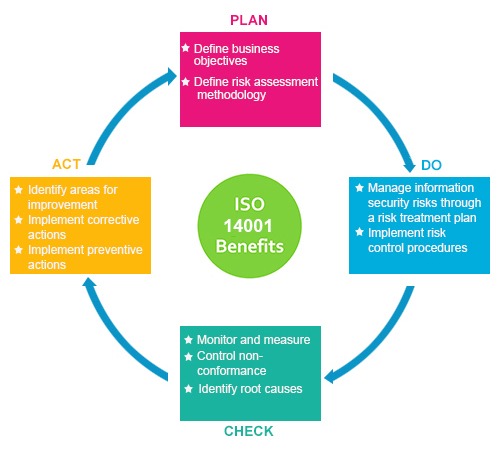
- Increased business opportunities by demonstrating compliance
- Less waste and energy use resulting in better environmental management
- Enables you to prepare for the changing business landscape with confidence
- Gain greater customer and stakeholder trust by meeting legal requirements
- Efficiency is improved, cutting the costs of running your business
To implement ISO 14001, you need:
- Senior management commitment and support
- Good internal communication
- Customer and supplier feedback
- Shared responsibilities, roles and timescales
- Regular reviews of ISO 14001 to ensure continual improvement
- Training and incentives to motivate personnel
- The sharing of knowledge
The Certification Process for ISO 14001 will include
- Assessment
- Build and use management system
- Verify processes are followed
- Document and analyse non-conformance
- Audit
ISO 45001 Health & Safety Management (formerly BS ohsas 18001)

The previous ohsas 18001 has now been replaced by this new version designed to work alongside the latest versions of ISO 9001 and ISO 14001, plus other latest versions of standards being introduced.
It is the employer's responsibility to ensure that the risks to Health & Safety in the work place, are properly assessed and managed, to minimise the possibility of accident or incident to employees, or others that might have access to the site. As a company's staff are their most valuable asset they will work more efficiently in a safe environment.
This, or an equivalent standard, is needed to control the codes of practice for Health and Safety in the work place by ensuring that your processes, policies and work practices are safe for your staff and others. Any employer that neglects these responsibilities is risking the welfare of their staff, and their business, as well as the wrath of the Health & Safety authorities. Common sense and safe practice saves lives and money, this is the message behind the standard.
Benefits of ISO 45001
- Ensure that your organisation has the best working conditions that it can achieve
- Personnel are better motivated and engaged with a safer working environment
- A policy to identify hazards and control them
- Show both suppliers and customers that you are compliant
- A reduction in workplace illness and accidents through better, safer conditions
To implement the ISO 45001, you need:
- Senior management commitment and support
- Good internal communication
- Customer and supplier feedback
- Shared responsibilities, roles and timescales
- Regular reviews of ISO 45001 to ensure continual improvement
- Training and incentives to motivate personnel
- The sharing of knowledge
ISO/IEC 27001 Information Security Management (ISMS)
The ISMS is an international standard which helps you to recognise any risks to confidential information and implement the necessary controls to reduce or eliminate those risks. It will allow your business to grow with the confidence that all important information will remain confidential.Benefits of ISO/IEC 27001
- Show that your organisation is compliant, giving it preferred supplier status
- Risks can be identified and controlled
- Controls can be adapted to any areas of the business
- Customer and stakeholder trust is gained in the knowledge that their data is protected
To implement the ISO/IEC 27001, you need:
- Senior management commitment and support
- Good internal communication
- Customer and supplier feedback
- Shared responsibilities, roles and timescales
- Regular reviews of ISO/IEC 27001 to ensure continual improvement
- Training and incentives to motivate personnel
- The sharing of knowledge
ISO 22301 Business Continuity
As a customer, you are doing well, doing everything right, lots of customers, busy staff. A supplier lets you down:- no parts arriving,
- delays to customers,
- reputation in tatters,
- staff on short time,
- some leave, thus loss of key personnel,
- can’t sell because you can only make part of the product,
- cashflow ruined !!!
- natural disaster,
- raw materials don’t arrive,
- civil unrest in the supplier country,
- can’t make anything without materials,
- letting customers down,
- orders withdrawn,
- loss of cashflow,
- trauma !!!
Benefits of ISO 22301
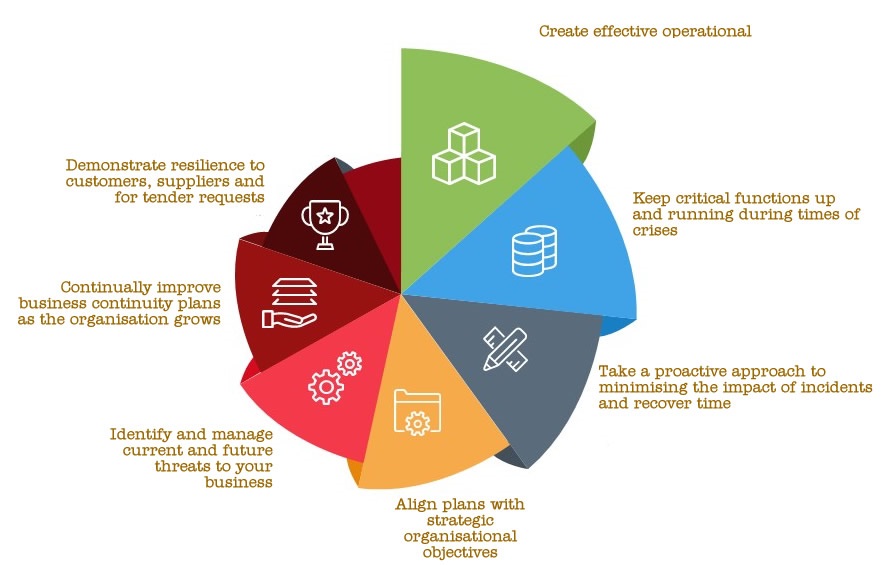 If you had the Business Continuity standard in place, what would be different??
If you had the Business Continuity standard in place, what would be different??
- Backup supplier in a different location,
- move to plan B when plan A fails,
- perhaps delays, but the job gets done
- Or, for frequently used supplies,
- kept at different locations,
- in the event of catastrophe at one location,
- switch to second location,
- order replacement stock,
- ensure the continuity plan is modified from what was learned.
Implementation of the ISO 22301
- Plan Business Continuity Management System (BCMS) policy – including objectives and processes to improve and mitigate both perceived and factored risks
- Establish BCMS and communicate its objectives and business impact to the effected parts of the business
- Monitor and review policy against objectives to determine possible improvements
- Ensure that the BCMS continues to cover the objectives by improving the policy where required based upon frequent appraisal during the review processes
BS EN 15713 Secure Destruction of Confidential Material
This is a European standard and British Standard, which provides recommendations on how organisations should manage and control the destruction of confidential material.Benefits of BS EN 15713
- Increased customer confidence as a result of your compliance
- Greater business opportunities resulting from customer confidence
- Helps to meet government targets for the environment
- Allows recycling of data storage equipment without data loss
- Opportunities to assist developing countries to become second users at low cost
To implement the BS EN 15713, you should have:
- Appropriate security of premises
- Documented contracts and audits
- Staff security screening
- Secure collection, retention and conveyance of confidential material
- Good communications within the organisation
- Shared knowledge within the organisation
ISO 17100 Translation Services
A difficult subject, especially when you can’t understand the language. It needs translating but:- Can you rely on the translation made?
- Has it been interpreted correctly? Sometimes translation can be a matter of life or death
- Was it translated by a professional company that has been certificated by an accredited body?
- Can I rely on the service given?
- Do they have training in place to ensure accuracy?
Benefits of ISO 17100
Your assurance comes with:- An accredited certification in place to show your company has the means and skills to ensure the translation is clear and precise
Implementation of the ISO 17100
- Translators will need to prove competence with either an appropriate degree or equivalent qualification or at least 5 years of experience
- Revisers to ensure Translator compliance
- Project Managers must have documented competence – either by formal or informal training
- Regular updating of required competences to ensure continual improvement
- Access to Technical resources to assist translation and the ability to share knowledge within the organisation
- Good internal communication throughout the company
AS 9100 Quality Management Systems
Requirements for Aviation, Space and Defence Organisations
The AS 9100 standard is a widely adopted quality management system, based on the ISO 9000 standard but designed to be used in the aviation, space, and defence industries and throughout the supply chain. It is intended for use by organisations that design and produce aviation, space, and defence products or that provide post-delivery support including maintenance, materials, or spare parts, for their own products. AS9100 is an important standard within the aerospace industry as most manufacturers and suppliers require compliance and/or registration to AS9100 as a condition of working with them.Benefits of AS 9100
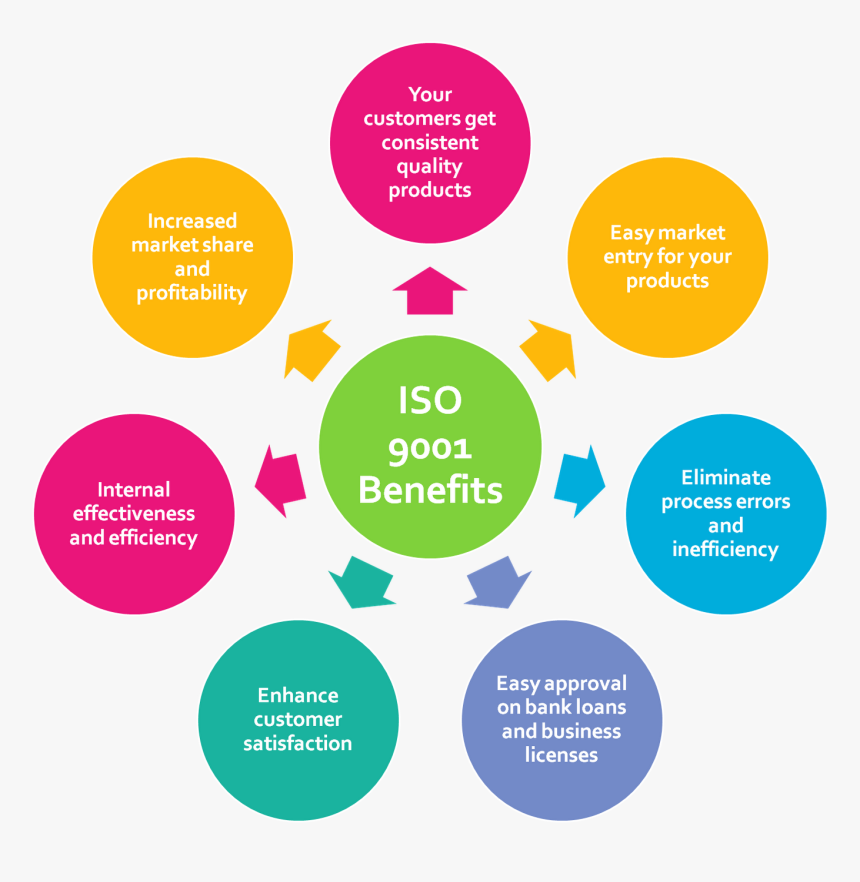
- Quality management is now integrated with the business strategies of your company
- Customer needs are met through better quality management
- A higher emphasis on leadership will motivate the whole organisation
- Greater staff engagement and motivation improved with efficient internal processes
- Money, time and resources saved with efficient working methods
- Reduced errors and increased profits through an improvement in operational performance
- A higher level of customer service resulting in an increase in high value customers
- Demonstration of compliance will widen business opportunities
- Emphasis on risk and opportunity management will contribute to continuing improvement
To implement the AS 9100, you need:
- Senior management commitment and support
- Good internal communication
- Customer and supplier feedback
- Shared responsibilities, roles and timescales
- Regular reviews of AS 9100 to ensure continual improvement
- Training and incentives to motivate personnel
- The sharing of knowledge
WHAT ARE THE BENEFITS OF HIPAA COMPLIANCE CERTIFICATION?
- Privacy of Health Data
- Security of Health Data
- Notification of Data Breaches
- Business opportunities through compliance
- Control on copies of medical data
- Increases personal privacy in healthcare information and decision-making
- Has created a brand-new industry to support medical professionals
- Prevents any form of discrimination in the medical sector
- Assigns role-based security of PHI
- Requires the organization to have a data backup plan in place & share a copy on request
- Protection against malicious software & reduces the risk of hacking PHI
- Physical security is a key area enforced for medical providers
- Reduction in the number of medical record errors
- Streamlining of processes through iterations and system audits
WHO NEEDS TO COMPLY WITH HIPAA CHECKLIST?
Any organization or individual who works in or with the healthcare industry or who has access to Protected Health Information (PHI) of US individuals – broadly classified as Covered Entities, Business Associates & Sub-Contractors. This includes:- Healthcare Providers – Hospitals, health clinics, nursing homes, doctors, dentists, pharmacies, chiropractors, and psychologists
- Employer Group Health Plans – HMOs, health insurance providers, company health plans, government programs that pay for health care such as Medicaid and Medicare, and veterans’ health programs
- Health Insurance Companies
- Healthcare Clearing Houses – Healthcare clearing houses include entities that process non-standard health information for a healthcare organization and transforms this data into a different format
- Business Associates (anyone who works with any of the 4 above)
WHAT ARE THE REQUIREMENTS OF HIPAA COMPLIANCE CERTIFICATION?
- Privacy & Security of PHI, e-PHI & organizational information with regards to data processing
- HIPAA Risk Analysis & Management
- Administrative, Physical & Technical Safeguards
- HIPAA Policy, Procedure & Documentation requirements
- Training & Awareness for the use of PHI
- Review of process, policy, document & updates on state law
WHAT ARE THE BENEFITS OF BEING GDPR COMPLIANT?
- The opportunity for customer retention and confidence in EU & EEA regions
- Better data security practices
- Opportunity to learn & implement new technology
- Secured mode of data storage & transfer
- New rules & rights for individuals/data subjects (consents, data deletion, privacy policy, etc.)
- Transparency with interested parties on the use of personal data processing
- Outward business development approach
- Streamlined client support approach
- Better handling of personal information of individuals
- Imposing data minimization on all business processes
- New job opportunities for DPO & other security roles
WHO SHOULD BE GDPR COMPLIANT?
The regulation applies to the processing of Personal Data in the European Union. This regulation applies to the processing of personal data in the context of the activities carried out by an establishment; either in the capacity of a controller or a processor, or both, in the European Union, regardless of whether the processing takes place within EU-EEA or out of it. To simply:- Firms located in the EU-EEA
- Firms not located in the EU-EEA, if they offer free or paid goods or services to EU residents or monitor the behavior of EU residents
WHAT ARE THE REQUIREMENTS TO BE GDPR COMPLIANT?
- Lawfulness, fairness & transparency to Data Subjects
- Limitation of purpose, data, and storage
- Data Subject rights
- Consents
- Legitimate Interests Assessment (LIA)
- Personal Data breaches
- Privacy by Design
- Data Protection Impact Assessment (DPIA)
- Data storage & transfers
- Data Protection Officer
- Checks on processing activities and personal data inventory
- Checks on privacy policies and privacy notices
- Embed data privacy into operations
- Checks on training and awareness programs
- Checks on information security risks
- Checks on third-party risks related to Personal Data
- Checks on Data Subject Access Request (DSAR)
STEPS INVOLVED IN ISO 31000 RISK MANAGEMENT
- Risk Assessment and Analysis:
- Risk Evaluation:
- Risk Treatment:
WHAT ARE THE BENEFITS OF ISO 31000 RISK MANAGEMENT
- Better traceability of projects that are in trouble
- Reduced number of incidents (unexpected events)
- Better decision making through qualitative data
- Savings on cost and time by avoiding incidents
- Better awareness on significant/probable risks
WHO CAN OPT FOR ISO 31000 RISK MANAGEMENT?
Risk Management is applicable to any kind of organization irrespective of their type and size, which envisions to set a strategic direction and define policies and procedures that help organizations in meeting the set objectives to accomplish their vision.WHAT ARE THE REQUIREMENTS OF ISO 31000 RISK MANAGEMENT?
- Integration of risk management concept as a part of all aspects of an organization.
- Leadership and commitment clause include alignment of risk management, organization policy statement, resources and risk appetite.
- Planning of accomplishment of objectives set by management through integration of factors affecting them like internal and external issues, roles and responsibilities and defining policies and procedures for better execution.
BENEFITS OF ISO 37001 CERTIFICATION TO YOUR ORGANIZATION
- The standard provides minimum requirements and supporting guidance for implementing an anti-bribery management system.
- Certification to ISO 37001 provides assurance to management, investors, business associates, personnel, and other stakeholders that an organization has taken appropriate measures to prevent bribery.
- Implementing the measures of the standard reduce the risk of malpractice
- Implementation and certification can be used as evidence of due diligence in case of disputes
- The ISO 37001 standard follows the same structure as ISO 9001, ISO 14001 and ISO 45001 and can easily be integrated into existing management systems
- During the certification audit, our auditors detect potential for improvement and make recommendations to increase the effectiveness of your anti-bribery system
WHO CAN GET ISO 37001 CERTIFICATION?
The requirements of ISO 37001:2016 are generic and are intended to be applicable to all organizations (or parts of an organization), regardless of type, size and nature of activity, and whether in the public, private or not-for-profit sectors.WHAT ARE THE REQUIREMENTS OF ISO 37001:2016??
- Bribery in the public, private and not-for-profit sectors;
- Bribery by the organization;
- Bribery by the organization’s personnel acting on the organization’s behalf or for its benefit;
- Bribery by the organization’s business associates acting on the organization’s behalf or for its benefit;
- Bribery of the organization;
- Bribery of the organization’s personnel in relation to the organization’s activities;
- Bribery of the organization’s business associates in relation to the organization’s activities;
- Direct and indirect bribery (e.g. a bribe offered or accepted through or by a third party).
ISO 10002:2018
QUALITY MANAGEMENT SYSTEM – CUSTOMER SATISFACTION
The management system that provides guidelines to handle customer relationship in various aspects with the inclusion of planning, designing, operations, resources, and support to maintain customer satisfaction. The framework for achieving complete customer satisfaction can be achieved by having this standard. The standard would be essential to service-providing organizations that belong to critical core process. Customer satisfaction improvements would be optimized and continual improvement is achieved. Comaplaint Handling System is crucial to the planning, design and development ISO 10002 framework.WHAT ARE THE BENEFITS OF ISO 10002 CERTIFICATION?
- Better Customer Retention:With this standard, it would be simple and effective to handle customers and retain them with the framework defined.
- Clarity:Efficient and effective identification of complaints due to categorization of the same would lead to optimizing the best solution that needs to be provided – more clarity on the complaints is achieved.
- Communication Enhancement:Internal and external communication improve as they are predefined and is easy to control with this standard.
- Faster Resolution:As the database of resolutions provided is extracted and maintained, it would decrease the time of resolution period.
- Association of Workforce:Due to enhanced communication and training, the workforce would be more involved in implementing requirements of the standard. Employees who are trained in awareness and responsibility of operations through trainings provided will benefit the organization to maintain the requirements of the standard.
- Integrated Management System:The standard could be integrated with various management systems and the documentation and operation process can be decreased with respect to efforts without the efficiency being affected.
- Branding:As all certifications can be used to build the reputation of the organization. The brand reputation would dramatically increase because of this certification.
WHO CAN GET ISO 10002 CERTIFICATION?
ISO 10002 is a quality management standard intended to be applicable for any organization, regardless of type, size, or product and services it provides.WHAT ARE THE REQUIREMENTS OF ISO 10002 CERTIFICATION?
Understanding of Requirements Understanding the exact criticality of the error with respect to client and the requirements of resolution through classification. The resolution framework has to be framed based upon the interested parties that matter to the business. Requirements capturing and SLAs have to be framed with proper understanding of customer requirements. Awareness and Competence Any organization has to improve the awareness and competency of its workforce and CertPro believes in knowledge transfer. Trainings on ISO Standard Awareness especially with respect to complaints-handling and other demands of ISO 10002:2018 would be imparted to the workforce with our training methods. Leadership and Responsibility In any ISO certification, the importance of leadership is high. Recognition of leaders within the organization to implement standard requirements is very critical. CertPro assists in recognition and also empowers them with trainings specifically oriented towards leaders regarding internal audit and various other efficiency measuring and monitoring methods. We also assist organizations in division of roles and responsibilities required in ISO 10002:2018 by using guidelines provided in ISO 10001:2018 as refrence. Framework of Complaint-Handling It is important to design and plan for a framework that would be required to handle all sorts of complaints, categorizing them on criticality, responsiveness and investigation of complaints. CertPro helps in establishing and documenting the operating procedures for any customer seeking this certification with its experience and expertise. Evaluation In ISO 10002:2018, it is necessary to understand the levels of satisfaction of the resolution provided and also to understand the areas of improvement. We would assist the organization to design a system that would concentrate on evaluation parameters and monitoring of the complaint-handling process. Audit and Reviews The organization has to regularly audit and monitor the complaint-handling system which has been established. It would require management tools that needs to be imparted to the management and the leaders of the organization to evaluate the system. The trainings for the review methods and documentation required for proof generation that could bring up confidence in the organization and its interested parties is very important. We at CertPro provide trainings on monitoring and measuring of the system, Internal Audit and Management Review Meeting (MRM). Continual Improvement ISO strongly believes in Risk Based approach and Continual Improvement. We at CertPro conduct annual review of the system and provide areas of improvement that the organization has failed to identify. Surveillance audits would be performed, and before these audits, technical assistance will be provided by us.ISO 26000:2010
SOCIAL RESPONSIBILITY
ISO 26000 is an international standard for social responsibility that defines the responsibility of an organization for the impacts of their decisions and activities on society and environment through transparent and ethical behaviour.CORE SUBJECTS AND ISSUES OF SOCIAL RESPONSIBILITY
- Organizational Governance
- Human Rights
- Labour Practices
- The Environment
- Fair Operating Practices
- Consumer Issues
- Community Involvement and Development
WHAT ARE THE BENEFITS OF ISO 26000 CERTIFICATION?
- Improved brand reputation thus enhancing better marketing and customer engagement
- Better commitment and productivity of employees
- Better attraction and retention of workers, clients and users
- Enhanced relationships with stakeholders
- Improved perception of investors, owners, and all the stakeholders
WHO CAN GET ISO 26000 CERTIFICATION?
ISO 26000 international standard is applicable to any kinds of organizations to address social responsibilities that are relevant to their vision and mission, processes, customers and other stakeholders.WHAT ARE THE REQUIREMENTS OF ISO 26000 CERTIFICATION?
- Defining policies and procedures on social responsibility based on the seven fundamental principles
- Stakeholders identification and engagement for better decision making for sustainable development
- Integration of Social Responsibility as an integral part of the organization that includes clear communication, improved credibility, review and evaluation of progress on performance and voluntary initiatives for sustainable development
SA 8000

SOCIAL ACCOUNTABILITY
SA 8000 is a certifiable standard management system based on ISO standards. It is also the first social ethical standard. It encourages organizations to develop, maintain and apply socially acceptable practices in the marketplace. The standards have 8 important criteria and a management system criterion based on social fingerprint; hence we can consider 9 important criteria for achieving this standard.WHAT ARE THE BENEFITS OF SA 8000 CERTIFICATION?
- Assured ethical treatment of workforce
- Enhanced supply chain management
- Long term relationship with customers
- Improved staff engagement
- Improved health and safety aspects
- Controlled cross-functional activities
- Increased job stability
- Better relationship with employees
- Committed workforce who are educated of labor rights
- Responsible supplier and vendors
- Marketing advantage
- Better image in the marketplace
WHO CAN GET SA 8000 CERTIFICATION?
Organizations having their primary resource as human force through which they deliver their services and processes need to adhere to international regulations on social applicability. Organizations who also seek to better their social responsibilities in the market need to pursue SA 8000 certification. It can be applicable to any organization irrespective of its size, location and nature of business. It helps the organization to integrate human values and provide better working environment for its key interested parties – employees. SA 8000 has benefitted organizations which seek to improve the retainability of their work force. Wikipedia.comWHAT ARE THE REQUIREMENTS OF SA 8000 CERTIFICATION?
Policies and Procedure Understanding of the requirements of 8 elements of SA 8000 and establishing policies based on these for the organization. The organization must determine policies and its elements that will help it achieve required levels of trust of its interested parties. Understanding of Elements There are critical elements related to the nature of business which needs more concentration and we would be assisting the organization in achieving the same during our business discovery process. Training Enlightening the employees of organizational policies and procedure with the demands of SA 8000. We would be training leaders in understanding the critical demands of the standard. The training would include knowledge transfer of the standard. Integrated Management System The SA 8000 can be integrated with other management system and the demand for Integrated Management System is very booming. We would deliver the compliance of the standard with utmost expertise involved in achieving the same along with other ISO standards.ISO 20000-1:2018
IT – SERVICE MANAGEMENT
It’s a standard that assures the quality of services that an organization provides. Service Management is a critical aspect of IT industry, it ensures efficient and resilient services in the market. It embeds a service lifecycle strategy into an organization, its continuous monitoring and improvement of SMS and its services – wholly as ITSM.BENEFITS OF ITSM CERTIFICATION TO YOUR ORGANIZATION
- Consistent approach to the service lifecycle
- Enhanced capability for planning, design, transition, delivery and improvement of services
- Better management of supply chain
- Enhanced Asset Management, Demand Management and Knowledge Management
- Increased client retention
- Reduction in service response times
- Better Configuration Management
- Enhanced Financial Management
- Enhanced corporate image and credibility
- Planned Outsource Management
- Competitive Demonstration
- Better Understanding of requirements
BENEFITS OF ITSM CERTIFICATION TO YOUR CUSTOMERS
- Structured framework of services as a service provider
- Customer focus in service sector
- IT infrastructure management and support
WHO CAN GET ITSM CERTIFICATION?
Organizations which provide IT products and services to end clients. The organization that seeks to improve its service deliverables. Any organization that seeks to improve its service through understanding of needs of customers and concentrate on end deliverables. Any organization can seek ITSM irrespective of any size or location.WHAT ARE THE REQUIREMENTS OF ISO 20000-1:2018?
IT Infrastructure: Management of the KEDB and CMDB. Internal framework of infrastructure is built with effective management system. Service structure: A better service structure with improvement in all core areas of services is maintained, Service Request Management, Service Agreements and Operational Level Control. Service portfolios are managed and maintained with clarity. Incident Management: Effective management of incidents, Response Management and solution provision for customers. Knowledge Management: Knowledge Management helps understanding issues that are faced during the service delivery and faster resolution of the same is achieved with this. Change and Release management: Change and Release Management helps reduction in costs and risks of ongoing changes in the service structure. Release and Deployment Management helps to decrease costs and provide better services in a planned manner. Internal Audit: Internal audit is critical and mandatory for achieving said certification. It is a management tool provided in ISO to evaluate the conformity of compliance. Internal Audit training with the inclusion of Deming Cycle with templates and MRM minutes capture.ISO 41001:2018
FACILITY MANAGEMENT SYSTEM
Facility Management (FM) integrates multiple functions for better efficiency and productivity of various factors involved in societies and organizations. Facility management as a tool that helps organizations improve efficiencies across various areas right from procurement to operations till maintenance, i.e. the entire supply chain.WHAT ARE THE BENEFITS OF ISO 41001 CERTIFICATION?
- Enhanced safety and health, better workforce productivity and well-being
- Requirements and methodologies within and among the organizations would be improved with better communication
- Cost benefits to organizations through improved efficiency and effectiveness
- Better service consistency
- A common platform for all types of organizations
- Better training of personnel to align with service portfolios
WHO CAN GET ISO 41001 CERTIFICATION?
Facility Management is an integral function that is applicable to organizations which help co-ordinate people, place and process within the functional environment, with an intention to improve quality life of people and the productivity of their core business.WHAT ARE THE REQUIREMENTS OF ISO 41001:2018?
- Identification and documentation of external and internal issues that are relevant to the processes which could have an impact on the ability to accomplish the objectives of an organization.
- Demonstration of leadership and commitment with regards to objectives and policies of Facilities Management that set a strategic direction for an organization.
- Planning of actions to address risks and opportunities through risk-based decision-making approach to equip the system to achieve intended results.
- Resource identification, awareness trainings and implementation of Facility Management system to plan, execute and control the processes that are required to meet standard requirements.
ISO 50001:2018

ENERGY MANAGEMENT SYSTEM
ISO 50001:2018 known as Energy Management System (EnMS) prescribes of having a systematic approach towards Energy Management which includes energy efficiency, energy security, energy usage and consumption. In this world, in order to sustain businesses for longer periods it is very essential to conserve and effectively use the resources (energy) available. The latest version, 2018, is modelled after ISO 9001:2015 and ISO 14001:2015, because of this the Energy Management System helps organizations improve its organizational efficiencies, energy performance and decrease environmental impacts.
WHAT ARE THE BENEFITS OF ISO 50001 CERTIFICATION?
- Energy Use:It provides a framework that establishes efficient use of the resources available to any organization and derive maximum output with minimized use of its resources.
- Fossil Fuel Dependency:With the improvement in renewable energy production, the dependency of the organization on fossil resources will decrease in the long term.
- Economic Benefit:The latest trend of the fuel or resources sector is increase in costs, the organization which is committed towards benefiting from ISO 50001:2018 would establish a framework to effectively use resources thus diminishing raising costs of fossil fuels.
- Educated Workforce:Due to the awareness programs during the implementation, the workforce is aware about the Energy Management. This also enhances their involvement in the implementation process.
- Corporate Image:Due to this certification, improved image of the organization can be enhanced in the eyes of interested parties, clients and stake holders. This could also boost the image in market thus leading to more business.
- Reduced Carbon-Footprint:With the implementation of this standard pollution and carbon impact on the environment can be decreased. This also improves the environment around the organization’s premises and helps in having a conducive environment to work in.
WHO CAN GET ISO 50001 CERTIFICATION?
Organizations seeking to improve their overall management system by means of Energy Management have to pursue this certification. Manufacturing, mining, food processing and producing industries, transportation industries and all such industries are applicable to be compliant of this standard. Organizations irrespective of size, nature of business and location can apply for this certification. Organizations that need huge amount of power as their input are required to achieve this certification, and in some countries, this may be a compulsion.WHAT ARE THE REQUIREMENTS OF ISO 50001 CERTIFICATION?
Risks and Opportunities Any ISO Certification has now adopted risk-based approach hence recognized interested parties have to be considered for risk assessment; risks must be calculated and mitigated. An analysis would also help us understand opportunities that are present within the organization to achieve improvement. Energy Performance Indicators and Baseline Any Organization who needs to design, plan and implement energy efficiency needs to understand key parameters to evaluate the performance of the system. The organization must define Energy Performance Indicators (EnPI) and set baselines for energy consumption. CertPro assists to recognize key processes and their controlling parameters through analysis and expertise. Objectives and Plan Since ISO 50001 requires organizational level objectives that require effective implementation, this certification requires planning and distribution of the roles and responsibilities among workforce and leaders. Creation of a sustainable plan to not just meet standard requirements, but to also to show continual improvement is a mandate. Knowledge Transfer Any ISO Certification would require knowledge on the demands of the standard and on the deliverables required to be maintained by the workforce. Trainings on maintaining and reviewing is a requirement. Critical Operating Parameters Parameters that are constantly monitored in production processes to analyze deviations in the process are very critical in Energy Management System. This requires expertise to understand the process and recognize the importance of operational parameters to align them with an organization’s energy consumption. Internal Audit and MRM Internal audit is a management tool which enables us to evaluate the implementation and performance of the system. Internal Audit training is provided as a part of our implementation methodology. Specific training is given to leaders and top management. Management Review Meeting is an important factor to showcase commitment towards a management system. MRM has a specific method to be performed in order to achieve compliance.ISO 29001:2010
PETROLEUM, PETROCHEMICAL AND NATURAL GAS
ISO 29001:2015 is a quality management system that states technical specifications/ requirements for petroleum, petrochemical, and natural gas industries that includes design and development, production, installation, and service of products. This standard is framed with an intention for organizations to ensure that they meet all requirements of customers and stakeholders.WHAT ARE THE BENEFITS OF ISO 29001 CERTIFICATION?
- Adherence to the requirements of international practices of oil and gas sector organizations
- Handling operations with commitment to health and safety within a hazardous industry
- Strengthening the confidence of stakeholders & public through sound and safe business practices
- Value addition to both the organization and its suppliers through flexible and faster in responses to changing markets
- Greater quality awareness amongst employees with the help of set of consistent and well-defined procedures
- Improved organizational capabilities enables an organization to have better competitive advantage.
- Ability to achieve intended results with better alignment of processes
- Better approach to risk management and performance, thereby reducing the expenses and increasing efficiency in the system
WHAT ARE THE REQUIREMENTS OF ISO 29001:2010?
- Define the sequence and interaction of processes in the form of SOPs to make sure both the operation and control of these processes are effectively handled.
- Define required resources and information to support the activities involved in these processes.
- Define policies and procedures to be communicated to the organization, the importance of meeting customer, statutory and regulatory requirements.
- Need to identify resources as per specific requirements that help management/organization to meet the set objectives and desired results.
- Monitoring and review of processes that involves various activities beginning with planning of design and development until realizing the product from conceptualization into market.
WHO CAN GET ISO 29001 CERTIFICATION?
This standard is applicable to organizations:- That involve in exploration, production and refining of petroleum and natural gas products.
- That indulge in design, manufacture, installation and servicing of equipment that are used in the activities of processing the petroleum and natural gas products.
- That involve themselves in providing technical and operational support services in the same line of industry.
ISO 21101:2014
ADVENTURE TOURISM – SAFETY MANAGEMENT SYSTEMS
It defines the requirements of a Safety Management System for adventure tourism activity providers. Adventure tourism is one of fastest developing industries in recent days, and without appropriate safety measures it could be a disaster to human life & reputation. The above standard guides the best practice in the industry, concentrating on risks associated with it.WHAT ARE THE BENEFITS OF ISO 21101 CERTIFICATION?
- Iteration of risk analysis to reduce risk & increase safety
- Conformity to the legal & regulatory requirements
- Increase access to global markets by being compliant
- Transparent enough to demonstrate safety practices
- Delivers advanced safety for adventure tourism activities
- Meets safety expectations of participants & staff alike
WHAT ARE THE REQUIREMENTS OF ISO 21101:2014?
- Commitment of management
- Needs or expectations of the participants, legal & other interested bodies
- Identifying internal & external risks
- Roles & Responsibility
- Risk Management
- Staff awareness & Skill development
- Vendor management
- Hazard Identification
- Incident Management
- Emergency preparedness and response
- Personal Protective Equipment
- Resource Management
- Communication & Documented information
- Monitoring & measuring
- Internal Audits
WHO CAN GET ISO 21101 CERTIFICATION?
Is applicable to all types of adventure tourism organizations regardless of size, geography, cultural & social environment like Day hiking, Zip lining, Climbing, Freefall, Rafting, Mountain biking, Skiing, Snowboarding, Scuba diving, base jumping, etc.ISO 20121:2012
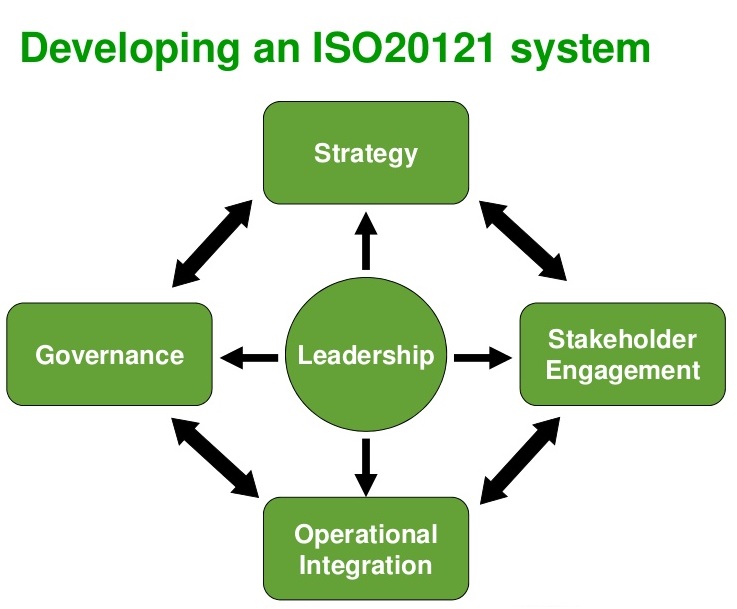
EVENT SUSTAINABILITY MANAGEMENT SYSTEM
ISO 20121:2012 is for Sustainable Event Management for any type of events & provides a guideline on conformity for its requirements. The main objective of Event Sustainability Management is to create and sustain a balanced approach towards economic activity, environmental responsibility, and social progress.WHAT ARE THE BENEFITS OF ISO 20121 CERTIFICATION?
- Unique selling point in the global market space
- Reduce cost, time & resource by implementing sustainability
- Increase in opportunities
- Comply with the legal & regulatory requirements
- Engagement of staff & other interested parties
WHAT ARE THE REQUIREMENTS OF ISO 20121:2012?
- Identify your issues in relation to your event management operations
- Outline your commitments to sustainability in the form of a sustainability policy
- Develop SMART objectives and targets in relation to sustainability
- Awareness to your staff on sustainability
- Challenges & opportunities
- Creating roles & responsibilities
- Resource management & assumptions
- Planning & Implementing
- Checks and monitoring
- Internal Audits
- Engage your suppliers on sustainability
- Develop a sustainability communications plan
- Monitor and measure your success
- Audit and review your documentation
- Communication plans
- Supply chain management
WHO CAN GET ISO 20121 CERTIFICATION?
ISO 20121 provides a framework for all members of the event supply chain (from event managers and venues right through to production companies and caterers) to consider their social, economic and environmental impacts. As organizations can identify issues that are relevant for their events rather than work through a rigid checklist, ISO 20121 is applicable to events of all sizes, types & geography starting from a small house party to hosting a world cup. It is also relevant for all different types of events such as business meets, sports and cultural events.ISO 45001:2018
OCCUPATIONAL HEALTH AND SAFETY MANAGEMENT SYSTEM
The standards that defines the requirements of Occupational Health and Safety Management System. The standard is based on OHSAS 18001 and ISO 9001 standards that combine the international requirements of management systems and the critical requirements of having a conducive environment of workplace wherein importance is given to the health and safety of the workforce with integration of quality. The standard improves the quality and understanding of critical aspects of occupational hazards that needs risk management and addresses them with proper understanding of protective environment.WHAT ARE THE BENEFITS OF ISO 45001 CERTIFICATION?
- Improves the corporate image of the organization and provides exposure to elite management working modules.
- Involvement of the workforce with awareness would enhance the efficiency of the organization due to Best Practices.
- Identification of Hazards and Risks and equips the organization to handle them with a preventive approach.
- Transforms the process from detection to prevention module.
- Enhanced supply chain that provides the consistency required to conduct business without obstacles.
- Decrease in the incidents that hamper business consistency.
- Integration of the ISO 45001 Certification with other ISO Services.
- Responsive management towards legal and regulatory requirements of government and customers.
- Reduces the insurance premiums by implementing the required control at required stages.
WHO CAN GET ISO 45001 CERTIFICATION?
Organizations irrespective of its size, location and nature of business can adopt ISO 45001 Certification. Many industries in manufacturing, service, mining, food processing opt for ISO 45001 Certification in order to enhance Occupational Health and Safety requirements. The industries that look at improving the knowledge and involvement of the workforce would require to have this certification system. The organizations that prefer to train their employees in identification and mitigating operational risks of health and safety are advised to get ISO 45001 Certification.WHAT ARE THE REQUIREMENTS OF ISO 45001:2018?
Process Approach The standard is developed by integrating numerous ISO Services and follows the process approach. Our Business Discovery Process would enhance our understanding of true process of the organization and help us put in place the exact changes required in system. CertPro provides ISO Services based on process approach. Risks and Opportunities – HIRA Any organization must understand risks and opportunities in their system related to interested parties and provide documentation in form of HIRA (Hazard Identification and Risk Assessment). CertPro would assist the organization to identify and mitigate risks and hazards with complete knowledge transfer to the employees to perform and maintain this system of risk handling. ISO 31001 risk management would be critical and would be used as a part of the implementation by CertPro. PPE – Personal Protective Equipment Identification of risks and mitigating them with controls that are provided to the workforce needs to be addressed and CertPro would assist the organization to do the same. PPEs are very crucial and documentation for the same in various parameters is required. Type & Extent of Control Organizations need to define and document the type of control using classification methods and the extent of control that would be acceptable by the organization according to the best practices. CertPro would provide detailed training on types of controls and the brief about the best practices based on its expertise in providing ISO Services. Documentation and Record-Keeping Any assessor would require documented evidence to evaluate the system and organizations need to maintain documentation in respective stages of implementation. Control of documents is also necessary. Training – Internal Audit & Standard Knowledge Transfer Training would be provided in terms of standard knowledge and internal audit. These sectors are very critical and CertPro would provide training to all recognized leaders on Internal Audit, Monitoring and Measurement of the system & ISO 45001 Training (Standard). We believe in transferring the knowledge and decreasing the dependency on any external parties. External Audit CertPro would assist its customers to face the External Audit and would be present during the audit to provide solutions for any identification of improvement points. It would also be engaging the customer at regular intervals to help the organization to improve continuously.GMP
GOOD MANUFACTURING PRACTICE
Good Manufacturing Practice (GMP) is a part of Quality Assurance which as a system ensures the products manufactured are consistently produced and controlled according to quality standards requirements. This is a practice to minimize risks involved in any production activity that cannot be rectified/ eliminated through testing the final product.WHAT ARE THE BENEFITS OF GMP CERTIFICATION?
- Reduced operating costs as rework and penalties due to non-compliance would reduce and further improve efficiency.
- Reduction in food safety hazards and reduced contamination of food.
- Raw materials used in the manufacture of drugs are of known, and of possibly standardized, quality and are free from contamination.
- The manufacturing process is proven to meet its quality attributes.
- Adequate quality control testing measures to ensure that the product meets its quality specifications at time of release to market, and at the end of its shelf life.
- GMP helps boost export opportunities.
WHAT ARE THE REQUIREMENTS OF GMP CERTIFICATION?
- Quality System through Risk Management and Quality Review:
- QRM is a systematic process for identification, understanding, assessment and review of risks to the quality of the products manufactured.
- Regular and periodic quality reviews of all products should be performed with the objective of verification and consistent practices of existing processes.
- Complaints and Product Recalls:
- Complaints and other related information concerning potential defective products should be reviewed according to written procedures.
- A process must be defined to recall from the market rightly and effectively, for the products identified or suspected as defectives.
- Self-Inspection, Quality Audits and Approval:
- Self-inspection is a process to evaluate the manufacturer’s compliance with regards to GMP in terms of production and Quality Control.
- A quality audit is a process of examination and assessment of either all or part of quality system with an intention of improving the process involved in the system.
WHO CAN GET GMP CERTIFICATION?
Good Manufacturing Practice (GMP) is a term that is recognized worldwide for the control and management of manufacturing, testing and overall quality control of food and pharmaceutical products.ROHS
RESTRICTION OF HAZARDOUS SUBSTANCES
The Restriction of Specific Hazardous substances in the European market is controlled or governed by RoHS with the Directive 2002/95/EC. The standard defines the permissible limits for specific elements of materials. Any business that has its products in electronic and electrical domains which are targeted to the European market must be complaint with this directive. RoHS is also closely related to Waste Electrical and Electronic Equipment Directive (WEEE) as it concentrates on environment friendly aspects wherein recycling and reuse are also given equal importance.WHAT ARE THE BENEFITS OF ROHS COMPLIANCE?
- Product Honesty:The product is more trusted by customers and more tests prove that the product will be preferred more by customers. Labeling would clearly state components and its content levels thus ensuring transparency of the product in the market.
- Enhanced Supply Chain:The supply chain is better managed, and vendors are aware of product restrictions. A more educated workforce is achieved. Control of materials utilized is established.
- Health Benefits:Health benefits for the workforce is enhanced by the use of RoHS as more protective equipment is used during production.
- Reduced Defects:The organization will have reduced product defects as the product is controlled in all levels of supply chain and the workforce is better educated.
- Fewer Landfill Hazards:With the restriction of hazardous substances, less environmental exploitation is evidenced. More stringent and regularized methods of recycling is practiced.
WHO CAN GET ROHS COMPLIANCE?
Any organization seeking RoHS will have to provide components information and the composition of the products and its sub-parts to analyze the application of the RoHS Directive.WHAT ARE THE REQUIREMENTS OF ROHS COMPLIANCE?
It is highly recommended to achieve RoHS certification if you have electrical and electronic products which include the following materials:- Lead (Pb)
- Mercury (Hg)
- Cadmium (Cd)
- Hexavalent Chromium (Cr+6)
- Polybrominated biphenyls (PBB)
- Polybrominated diphenyl ether (PBDE)
- Bis(2-ethylhexyl) phthalate (DEHP)
- Butyl benzyl phthalate (BBP)
ISO 22000:2018
FOOD SAFETY MANAGEMENT SYSTEM
ISO 22000:2018 is an international standard for Food Safety Management System. This helps in controlling hazards related to food. The Standard helps in control from farm to fork. It has a great focus on the risks associated with food. HACCP and Deming cycle are an integral part of the certification. The standard also uses Quality Management System approach to ensure safe food products and uses controlled food chain practices.BENEFITS OF ISO 22000 CERTIFICATION TO YOUR ORGANIZATION
- Better Management of Risks – Reduced incidents and complication
- Resource Optimization – Internally and along the food chain
- Facilitated Market Growth – Increased reach in terms of customers
- Controlled Supplier or Vendor Management – Boost confidence of suppliers
- Continued Improvement – Enhanced system due to internal audits and better control of hazards
- Hazard Management – Identification, control measures, and reduced risks and impacts
- Covers other Management Systems – FSSC 22000, BRC requirements are achievable
- Equipped for regulatory changes – Basic compliance for various standards are achieved
- Promote international trade – Enhanced reach and recognition in the international market
- Competitive advantage in the market place with this certification.
BENEFITS OF ISO 22000 CERTIFICATION TO YOUR CUSTOMERS
- Trusted supplier – The supplier is stable and the supply chain is constant
- Regulatory Requirements – To ensure all regulatory requirements are met by the supplier
- Traceability – Ensures the supplier has good Supply Chain Management
- Safety – Safe and clean food. Any customer is assured of a safe and clean product
- Risk management – The risks related to food are managed appropriately by the supplier
WHAT ARE THE REQUIREMENTS OF ISO 22000 CERTIFICATION?
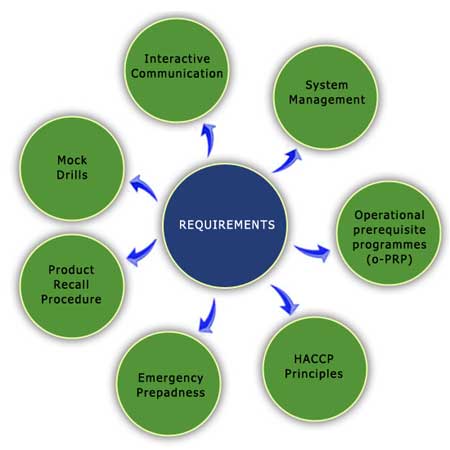
- Understanding of Legal And Regulatory Requirements
- Leadership
- Risk Management
- Hazard Analysis
- PRP – Pre-Requistie Programs
- OPRP – Operational Pre-Requistie Programs
- Critical Control Points
- Traceability
- Monitoring and Measuring
- Internal Audits
HACCP
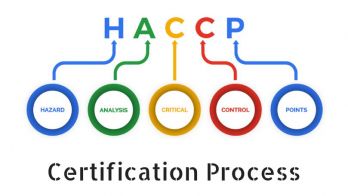
HAZARD ANALYSIS & CRITICAL CONTROL POINT
Internationally recognized method for identifying and Managing the hazards or risks in food system. The food system is addressed through analysis and identification of critical points and implementing these controls. It outlines good manufacturing practices for all food sectors. HACCP is critical for your compliance as it is the base for most international food related standards. Its design is based on preventive approach through the identification and control of Biological, Physical and Chemical hazards.BENEFITS OF HACCP CERTIFICATION TO YOUR ORGANIZATION
- Implementation of internationally recognized standard.
- Better trust with customers.
- Reduced costs in long run.
- Food safety standards increase.
- Informed staffs in the organization.
- Enhanced inventory control.
- Consistency in the product quality.
BENEFITS OF HACCP CERTIFICATION TO YOUR CUSTOMERS
- Assured product quality – Since HACCP certified vendors would be practicing all required steps for compliance, assured product is obtained
- Better traceability of products – Whenever required, traceability of products is possible through this standard – Farm to Fork
- Compliance for most international standards – Most international food related standards have HACCP as a basic requirement
- Preventive approach – An edge over traditional industrial practices through risk assessment
- In times of litigation – The supplier is prepared for all requirements of legal and regulatory requirements
WHAT ARE THE REQUIREMENTS OF HACCP CERTIFICATION?
- Principles of HACCP
- Identification of the Hazard
- Critical Control Points
- HACCP Plan
- PRP and OPRP
- Traceability
- Integration with various international Standards
HALAL
ISLAMIC FOOD SAFETY
Halal is derived from Arabic which means ‘Lawful’ or ‘Permitted’, provides assurance to all Muslim consumers that the food is processed according to Islamic laws (Sharia). The food products which are consumed by Muslim communities in daily life are in compliance with the process and procedure as defined by Islamic laws which are also nutritious and ensure quality. CertPro would also offers the guidelines to be followed by the manufacturer or processor of food which establishes the halal process. The certification though is applicable to meat industry but is also applicable to industries that process milk, canned foods and additives. There are few requirement in halal certifications. The Certification would help the Muslim community to identify the acceptable food product and would also boost the business in few areas of nation where the community is in abundance. CertPro offers Halal Certification in India, South Africa, Oman, UAE, Dubai, Saudi Arabia, Iraq, Iran, Nigeria and all other nations. With the Expertise’s in Halal Certifications CertPro is the last destination for all the certifications required with food Safety Management system.WHAT ARE THE BENEFITS OF HALAL CERTIFICATION?
- Lawful food according to Islamic dietary guidelines
- Integrity and ethical way of life by avoiding cruelty to animals, harm to the environment and unfair business practices
- Providing quality system and good practices for creating a trusted reputation with their customers
- Legal implications
- A platform to penetrate international markets
- Boosts other supporting standards such as HACCP and Good Manufacturing Practice (GMP)
WHO CAN GET HALAL CERTIFICATION?
- Food processing industry
- Meat slaughtering houses
- Restaurants and kitchens
- Dairy industry
WHAT ARE THE REQUIREMENTS OF HALAL CERTIFICATION?
- Interested parties and stake holders
- Muslim personnel certified under Islamic slaughtering procedures
- Resource management – General, Personnel, Facilities and Environments condition and Equipments (Cutleries)
- Process Requirements – Preparation, Processing, Packaging, Transportation, and Storages
ISO 17025:2017
TESTING AND CALIBRATION LABORATORIES
ISO/IEC 17025 was first issued in 1999 by the International Organization for Standardization (ISO) and the International Electro technical Commission (IEC). This ISO standard used by testing and calibration laboratories around the world. ISO/IEC 17025 is the standard for which most labs must hold accreditation in order to be deemed technically competent and able to produce precise and accurate test and/or calibration data.WHAT ARE THE BENEFITS OF ISO 17025 CERTIFICATION?
- Providing quality system by which you operate is essential for creating a trusted reputation with your customers.
- Improves the image of your laboratory.
- Legal implications.
- Measures Quality and Capability – Testing and Competence of your facility.
- Marketing tool – Like other ISO standards, this is an effective marketing tool in complex and competitive market spaces.
- A platform to penetrate into international markets.
- Boosts other supporting standards such as Good Laboratory Practice (GMP) and Good Manufacturing Practice (GMP).
WHAT ARE THE REQUIREMENTS OF ISO 17025:2017?
- Interested parties and stake holders.
- Laboratories have to be incorporated on overall system for technical and management requirements.
- Resource management – General, Personnel, Facilities and Environments condition and Equipment.
- Process Requirements – Reviews, Selection, Verifications, Validation of methods, Sampling, Technical records.
- Management system documentation – Address Risks, Control of Records, Corrective Actions, Internal Audit and Management Review.
WHO CAN GET ISO 17025 CERTIFICATION?
- Healthcare sector
- Metrological laboratories
- Testing and calibrations laboratories
ISO 13485:2016
MEDICAL DEVICES – QUALITY MANAGEMENT SYSTEM
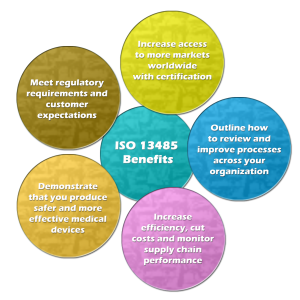
ISO 13485 standard is a Quality Management System for the medical device industry where an organization needs to demonstrate its ability to manufacture, procure, store and well medical devices and related services that consistently meet customer and applicable regulatory requirements. Organizations can have multiple stages of lifecycle, including design and development, production, storage and distribution, installation, or servicing of a medical device and other associated activities (e.g. technical support).
In simple words, ISO 13485 standard is a combination of ISO 9001 requirements with an additional set of medical device requirements.
BENEFITS OF ISO 13485 CERTIFICATION TO YOUR ORGANIZATION
- Credibility – Increase access to bigger market worldwide with the certification
- Process Approach – Increase efficiency, cut costs and monitor supply chain effectiveness
- Quality Compliance – Demonstrate that you produce safer and more effective medical devices
- Customer Satisfaction – Meet regulatory requirements and customer expectations
- Employee Engagement – Better people involvement to identify best solutions for improving processes
- Business Excellence – Shorter lead times and better services through quality and process improvement initiatives
BENEFITS OF ISO 13485 CERTIFICATION TO YOUR CUSTOMERS?
- Provides management with a defined & efficient management process
- Responsibility across the organization to achieve the objective
- One of the criteria of a tender to qualify for some public sector work
- Positive atmosphere & builds confidence in internal staff & customers
- Identifies areas to improve & reduce iterations
- Metrics to reduce resources (Men, Money, Machine, Material & Method)
- Provides continuous assessment and improvement
- Marketing opportunities
- Improved customer retention and acquisition
- Globally recognized standard inviting for international opportunities
WHO CAN GET ISO 13485 CERTIFICATION?
ISO 13485:2016 standard is applicable to organizations regardless of their size and their type. Requirements that are specified as applicable to medical devices shall also be applicable equally to associated services. Therefore, the standard is not only applicable to medical device manufacturers but also to supporting firms like subcontractors, stockists, suppliers and European Authorized Representatives.WHAT ARE THE REQUIREMENTS OF ISO 13485:2016?
General Requirements – This includes required documents like Quality Manual, documented procedures and records Management Responsibilities – Resource identification for MR and planning of QMS (Resource Management) Product Realization – Major concepts of planning and creation of the product like Design Controls, Risk Management, Document Control and Records Management & Supplier Management will be addressed as part of requirements Culture of Evaluation & Continual Improvement – These requirements include customer satisfaction, internal audits, dealing with non-conformities and corrective actions These concepts are based on Plan-Do-Check-Act cycle, which use the above-mentioned elements to implement, drive and maintain improvements within the processes.CE MARKING
EUROPEAN PRODUCT CERTIFICATION
CE Marking is a certification mark that assures the compliance of the product according to the European Economic Area (EEA). It is recognized worldwide even outside the EEA and is acceptable Worldwide. It is also mandatory for conduction of business in the European market. The responsibility of the standard would be upon the manufacturer or trader placing the product in the market. CE Marking also has a self-assessment wherein a manufacturer provides a declaration of conformity that ensures a pledge from the manufacturer of adhering to the rules proposed by the EU.WHAT ARE THE BENEFITS OF CE MARKING?
Business Advantages Organizations having Proper CE Mark can conduct business without facing any restrictions In EEA (European Economic Area). Product Reliability The product is trusted more in the market and safer products both with respect to manufacturing and customer safety is achieved. Compliance to regulations Since CE Mark is the only set of regulatory process, manufacturers need not worry about too many restrictions. Applying and achieving conformity can be the one stop solution. Self-Assessment Since not all CE Mark certification requires Notified Body certifications, it is also possible for a few directives to be self-declared by the manufacturer for conformity. Liability and damage claims Since the products are CE Certified and the practice of the regulations are inculcated, damages or errors would decrease in the product and liability claims would decrease in the European market. Free Market Access Since CE Mark is the only certification required, nation-wise standards application is ruled out in European Free Trade Market. Any manufacturer can place his product in market with CE Marking.WHAT ARE THE REQUIREMENTS OF CE CERTIFICATION?
Understanding of Applicable Directives We would analyze products and classify them as per applicable directives for the product. We would also provide the applicable Harmonized Standards which regulate the product according to the norms of European Union (EU). Suggestion of Tests Certificates We would also suggest the applicable tests that need to be performed in order to certify the product with the applicable directives. These tests are also important in case of a few products that have stricter regulations. CE Mark and Labeling A CE mark is attached to the product as a display of conformity of the product. It is the responsibility of the manufacturer or his representative to attest the CE Mark on the product or package before entering the market. We would guide the organization to follow rules and regulations of CE labelling. Educating Customers We believe that an implementation is complete with knowledge transfer. We would be explaining the directives, regulations, amendments and harmonized standards and their affect on certification. Knowledge on how to utilize the certification for business maximization would also be imparted. Declaration of Conformity DoC is essential for certification. The manufacturer must provide a Declaration of Conformity before getting certified for the product. We would assist in completion of Declaration of Conformity that needs to be provided for certification.GDP

GOOD DISTRIBUTION PRACTICE
Good Distribution Practice (GDP) is that part of quality assurance that ensures that the quality of a pharmaceutical product is maintained through adequate control throughout the numerous activities which occur during the distribution process.WHAT ARE THE BENEFITS OF GOOD DISTRIBUTION PRACTICES?
- Ensures principles of GDP are applied throughout the supply chain
- Maintains product integrity and patient safety
- Helps achieve consistency
- Reduces the risk of falsified medicines entering the supply chain
- Reduces distribution complaints
- Improves customer confidence
- Reduces expensive mistakes
- Improves efficiency and lower costs
- Reduces wastage
- Improves margins
- Creates a culture of continual improvement
- Increases market share
- Involves, motivates and assists in the training of staff
- Helps market the organisation effectively
- Puts the organisation in a position to exploit new market sectors and territories
WHO SHOULD GET GOOD DISTRIBUTION PRACTICES?
The implementation and certification of Good Distribution Practice is of paramount importance to safety as the global supply chain is becoming more complex and fragmented specifically in the pharmaceutical industry and food processing and packaging industry.WHAT ARE THE REQUIREMENTS OF GOOD DISTRIBUTION PRACTICES?
- Quality System through Risk Management and Quality Review
- QRM is a systematic process for identification, understanding, assessment and review of risks to the quality of the products manufactured.
- Regular and periodic quality reviews of all products should be performed with the objective of verification and consistent practices of existing processes.
- Warehousing and Storage
- Define policies and procedures to maintain storage standards where pharmaceutical and food products are stored.
- Transportation and Distribution
- Procedures to deliver pharmaceutical or food products need to be defined w.r.t handling of such specific products that are in terms of applicable national, regional and
- Written procedures for the dispatch of pharmaceutical products should be established and its traceability process must be defined.
- Complaints and Product Recalls
- Complaints and other related information concerning potential defective products should be reviewed according to written procedures.
What We Offer
Packages & Pricing
6499
Basic
10000
Standard
19999
premium
FAQs For Private Limited Company Registration
LicenseHub - Copyright 2023. All rights reserved.
- Designed By-WebsApex

